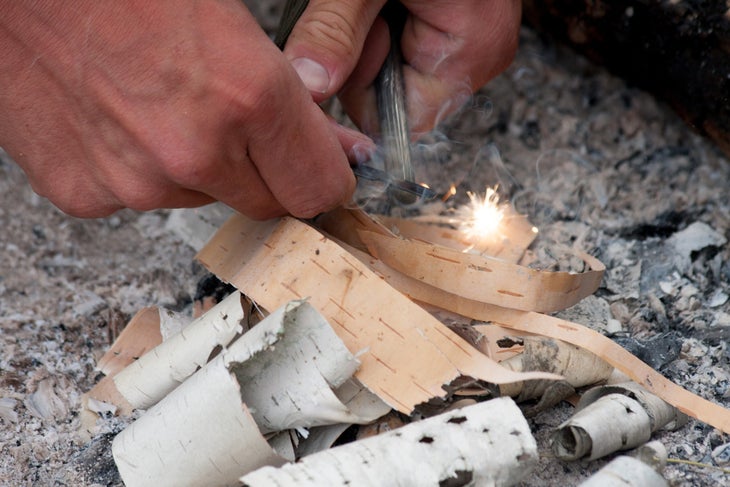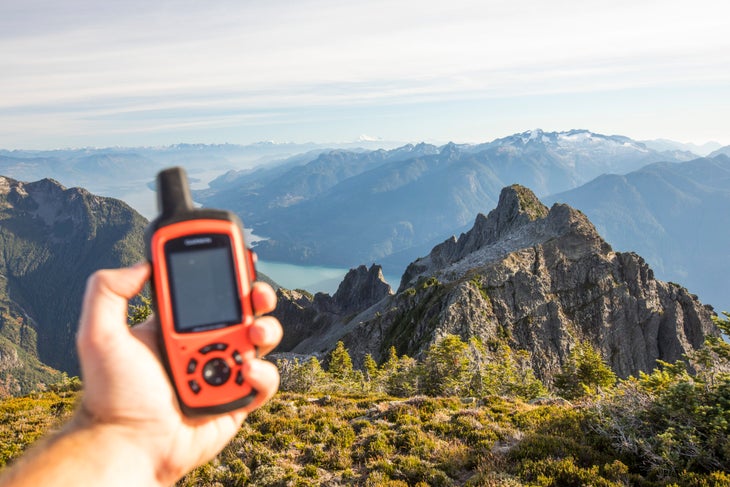Heading out the door? Read this article on the new Outside+ app available now on iOS devices for members! Download the app.
In her new monthly column, The Survivalist, Jessie Krebs writes about staying alive in dangerous backcountry scenarios. Krebs is a former Air Force S.E.R.E (survival, evasion, resistance, and escape) instructor and owner of O.W.L.S. Skills.
What is survival? It seems like an obvious question, but there is a fair amount of confusion around it, even for those of us who teach outdoor skills.
I think of outdoor skills as falling into three general categories, each with their own concepts around wilderness: ancestral living, bushcraft, and recreation. Unfortunately, many modern hikers are under the impression that they must know how to live in the backcountry to survive in the backcountry, which is not the case. Knowing the difference between these categories can help hikers better understand the skills they really need should they find themselves in trouble.
For most of our history, humans spent virtually all of our time outside. “Inside” wasn’t like it is for many of us now; climate-controlled with running water, lights, electricity, toilets, etc. Most of our waking time was spent hunting, herding, harvesting, bathing, socializing, collecting water and firewood, and so on.
Because every location offers its own challenges to humans trying to meet their needs, cultures reflect different styles of living on the land. Techniques used to live without “modern” resources are generally called ancestral living skills. They often go hand in hand with a set of beliefs centered around working with the land and its non-human denizens to ensure the community’s (and our) continued existence. There are still a few groups that live this way, for a variety of reasons.

Add some modern supplies (metal tools, imported staple foods and cloth, solar panels, plastics, and such) to groups that live some distance away from modern infrastructure, such as the electric grid, paved roads, and so on, and you have the latest version of the frontierspeople of old: bushcrafters. Quakers, homesteaders, some preppers, and others can be loosely lumped into this category. These folks may choose to distance themselves from civilization based on a pretty wide variety of beliefs: Modern culture is unhealthy in some way or makes us weak, living closer to the land is more wholesome, the apocalypse is coming and population centers will be wiped out, wild places are their happy place, you get the gist. These people generally live in developed countries: most of the world’s population lacks access to the comforts that many of us first-world folks enjoy.
The fact is, though, that you don’t need years of experience in trapping game or grinding your own flour to survive a sprained ankle or losing the trail. On average, survival experiences last about three days, and though the skills involved to persevere overlap loosely with both ancestral and bushcraft techniques, there are a few major differences. First, there’s how much time they take to learn: Many outdoor living skills take years of practice and education, while most hikers can learn basic survival techniques in a few hours and become reasonably proficient in them with a few days of training.

Second, these skill sets have different goals: Survival skills are meant as a stopgap to keep someone alive until they can return home, as opposed to living one’s life mostly outdoors.
Finally, backpackers learning survival techniques will need to plan to be stressed. Most survivors are trying to meet their needs while being lost, dehydrated, confused, damaged, sick, and so on. There are far too many stories where a very experienced person panics, which leads to a series of poor decisions that make their situation worse. Survival skills include methods to manage these stress factors and teach folks how to stop, relax, and think rationally before acting.
Pursuits like hunting are bushcraft or ancestral living skills, not survival tactics. Most of us can live up to a month without food, and hunting is generally not your best method of getting it in a survival situation anyway. (If you do need to catch some grub, snaring requires much less energy input, and is a better survival skill.) Signaling for help, on the other hand, is a key survival skill, but backpackers and other recreationists often ignore it in favor of “cooler” skills. No matter how we choose to be outside, we may need help now and then. Survival is not about learning to be self-sufficient in the wilderness, but how to ask for help as effectively and quickly as possible if we get into trouble.
Ancestral living, bushcraft, and recreation are all worthy ways of existing outside. In this column, my goal is to help you filter out the living skills that consume a lot of time to learn and are not likely to be useful in a short-term survival scenario. Stay tuned for more useful survival skills that might actually save your life on your next hike.
From 2023